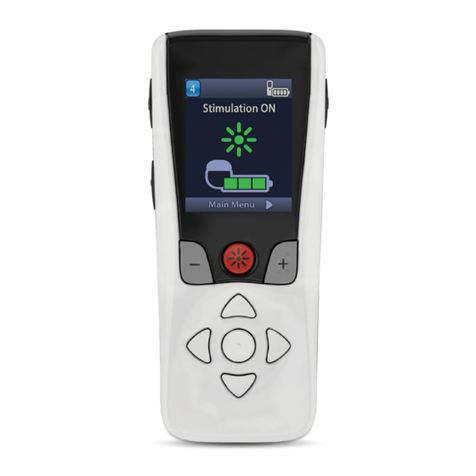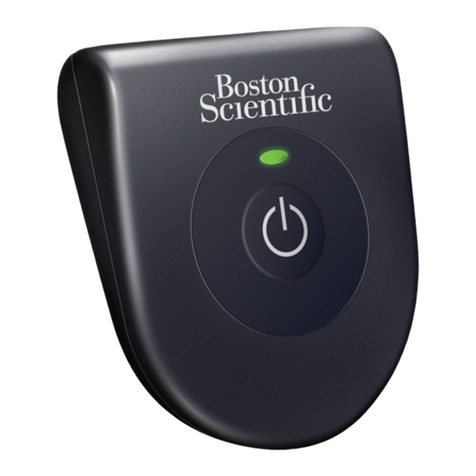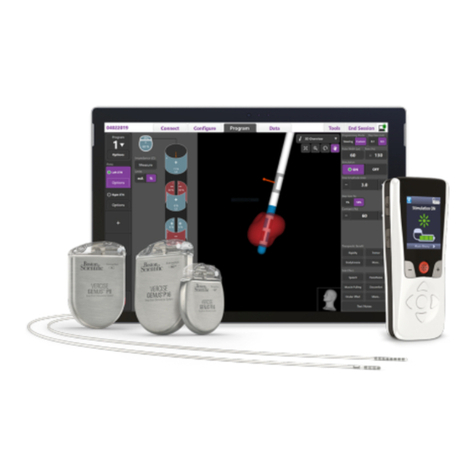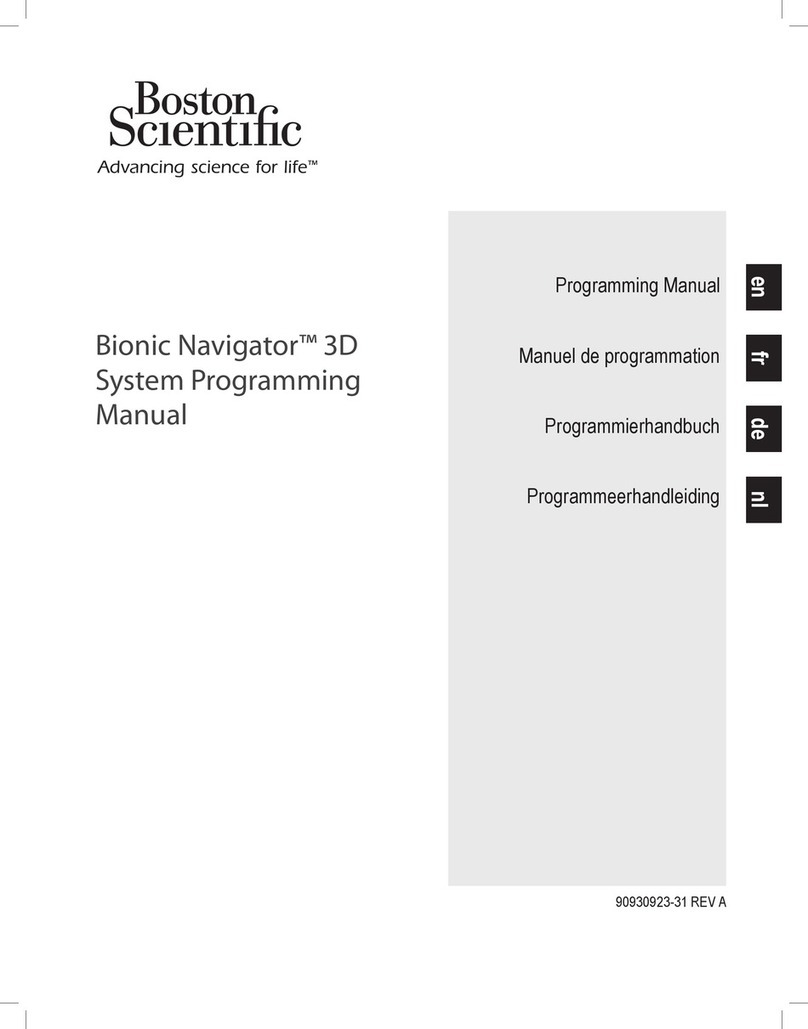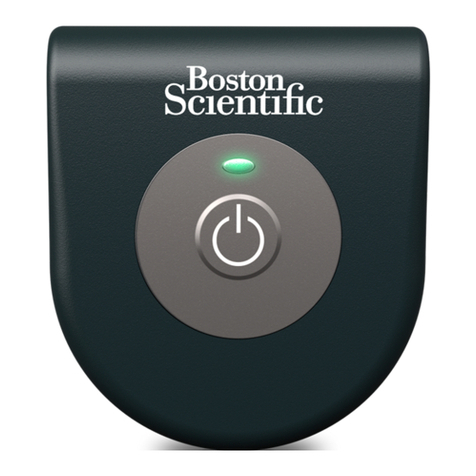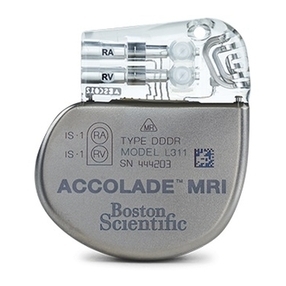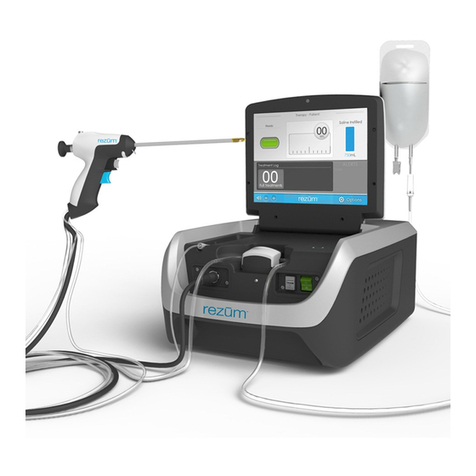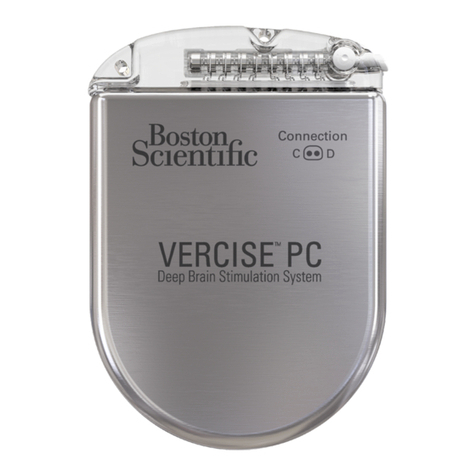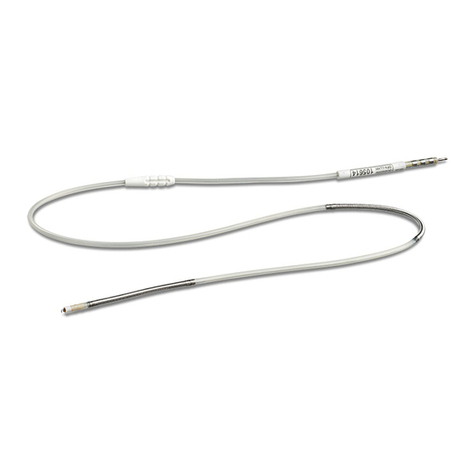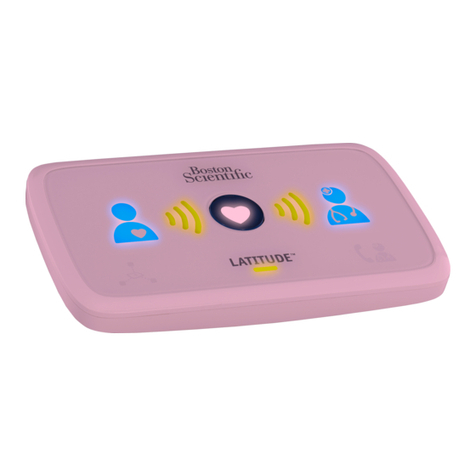
5
•Do not use this device in the presence of flammables or explosives, such as volatile anesthetics,
alcohol, certain surgical preparation solutions, and similar substances. An explosion and/or fire could
occur.
•The treatment beam can ignite most non-metallic materials. Use fire retardant drapes and gowns.
The area around the treatment site can be protected with towels or gauze sponges moistened with
sterile saline solution or sterile water. If allowed to dry, protective towels and sponges can increase
the potential fire hazard. A UL-approved fire extinguisher and water should be readily available.
•When performing procedures in the perianal area, the flammability of methane gas must be
considered. Moistened sponges should be inserted into the rectum.
•Smoke evacuation may be required if using the laser system in open-air procedures.
•When using a fiber-optic delivery device, always inspect the fiber-optic cable to ensure that it has not
been kinked, punctured, fractured, or otherwise damaged. The fiber-optic cable may be damaged if
stepped on, pulled, left lying in a vulnerable position, kinked, or tightly coiled. Do not clamp the cable
with a hemostat or other instruments. If sterile tape is used, always remove the tape before lifting
the cable. A damaged fiber-optic cable may cause accidental laser exposure or injury to the
treatment room personnel or patient, and/or fire in the treatment room.
•Never deliver the treatment beam to the target tissue if the aiming beam integrity has not been
verified; the optical fiber may be damaged. A damaged fiber may cause accidental laser exposure to
the treatment room personnel or patient, and/or fire in the treatment room.
•Except during actual treatment, the laser must always be in Standby mode. Maintaining the laser in
Standby mode prevents accidental laser exposure if the footswitch is inadvertently pressed.
•To prevent accidental laser discharge, always make sure that the footswitch is not being operated
while connecting the delivery system.
•Never place hands or other objects in the path of the laser beam. Severe burns could occur.
•Only the person directing the aim of the laser beam should have access to the laser footswitch. Use
caution pressing the laser footswitch when it is in proximity to footswitches for other equipment.
Verify the footswitch pressed is the correct one in order to avoid accidental laser exposure.
•Never discharge the laser without a target to absorb it and without consideration given to what lies
behind the target. Place energy-absorbing material behind the target tissue when aiming the laser at
an oblique target.
•Unauthorized use of this system may expose the operator/patient to potential electrical energy and
laser radiation hazards.
•Holmium lasers are intended solely for use by physicians trained in the use of the Ho:YAG (2.1 μm)
wavelength.
•Incorrect treatment settings can cause serious tissue damage. Therefore, it is recommended that you
use the lowest acceptable treatment settings until familiar with the instrument’s capabilities. Use
extreme caution until the biological interaction between the laser energy and tissue is thoroughly
understood.
•Due to interaction between flammable gases in the operating field and the laser energy a flash fire
may occur. Therefore, during laser procedures, measures to minimize this potential hazard should be
practiced (e.g. avoid administration of inhaled general anesthetics; reduce oxygen levels during
mechanical ventilation, use of laser-resistant endotracheal tubes). The flammability of methane gas
must also be considered when treating in or near the perianal area.
•The laser system should be used only on tissues that are fully observable. Do not use the laser if the
desired target is not visible. All available measures to visualize the target tissue (e.g. copious
irrigation, hemostasis) should be taken.
•When using endoscopic equipment confirm that the tip of the fiber-optic delivery device extends at
least 6 mm beyond the end of the scope during laser treatment. Activating the laser when the tip of
the delivery device is within the scope can result in penetration of holmium laser energy through the
scope and destruction of the scope.
•Use of the laser system on anatomical structures in proximity to known critical structures, such as
large arteries, veins, bowel, ureter, bladder, nerves, etc., should be performed carefully to avoid



